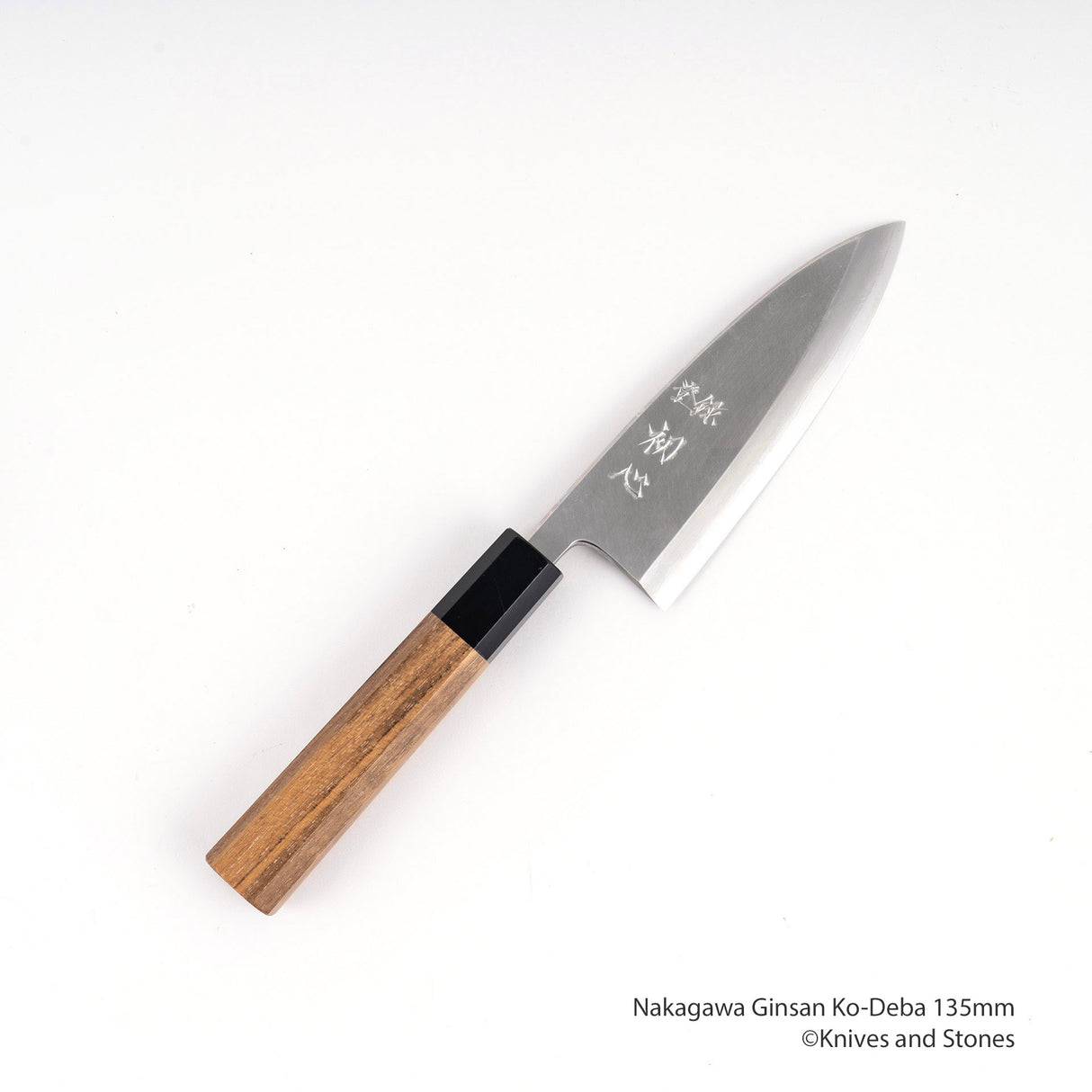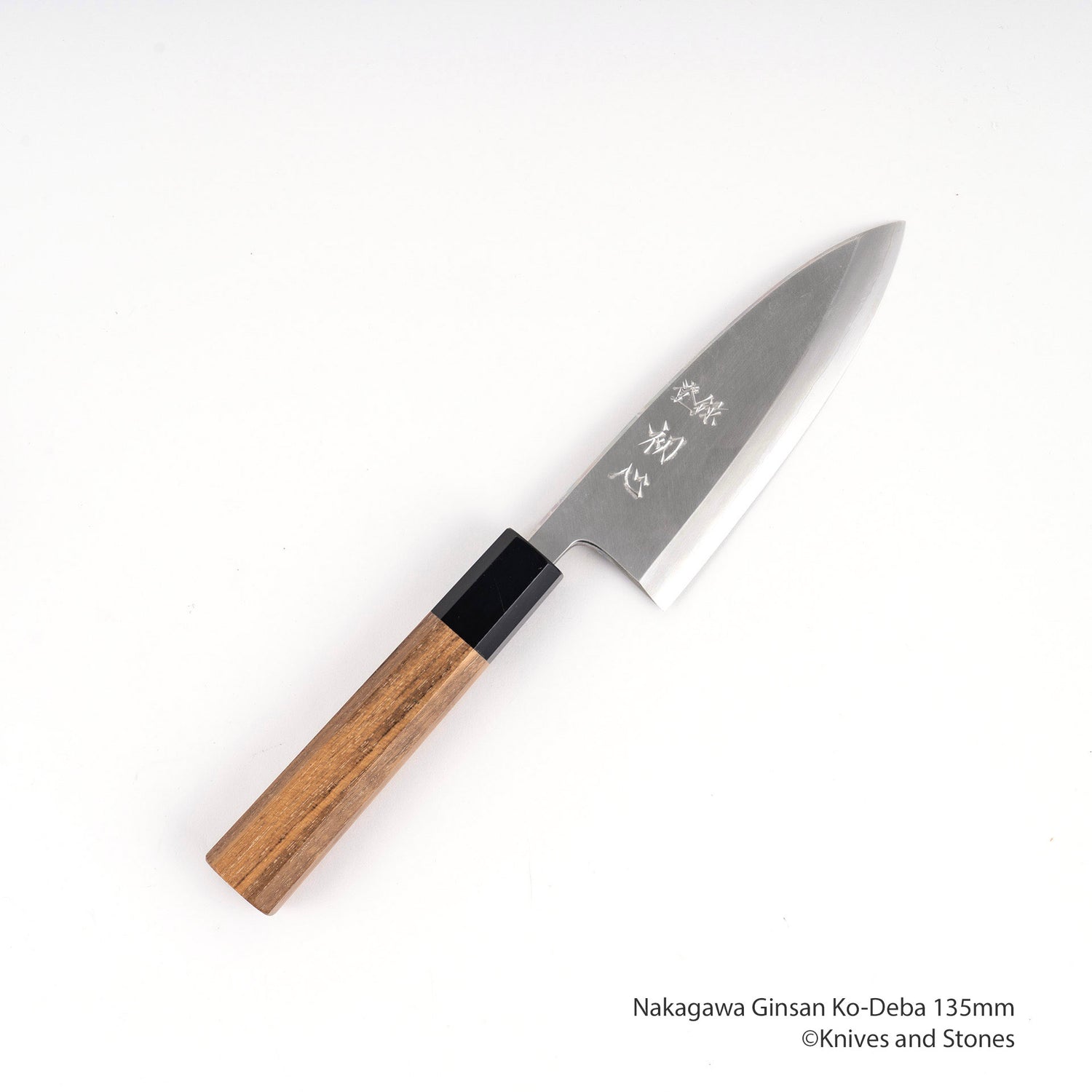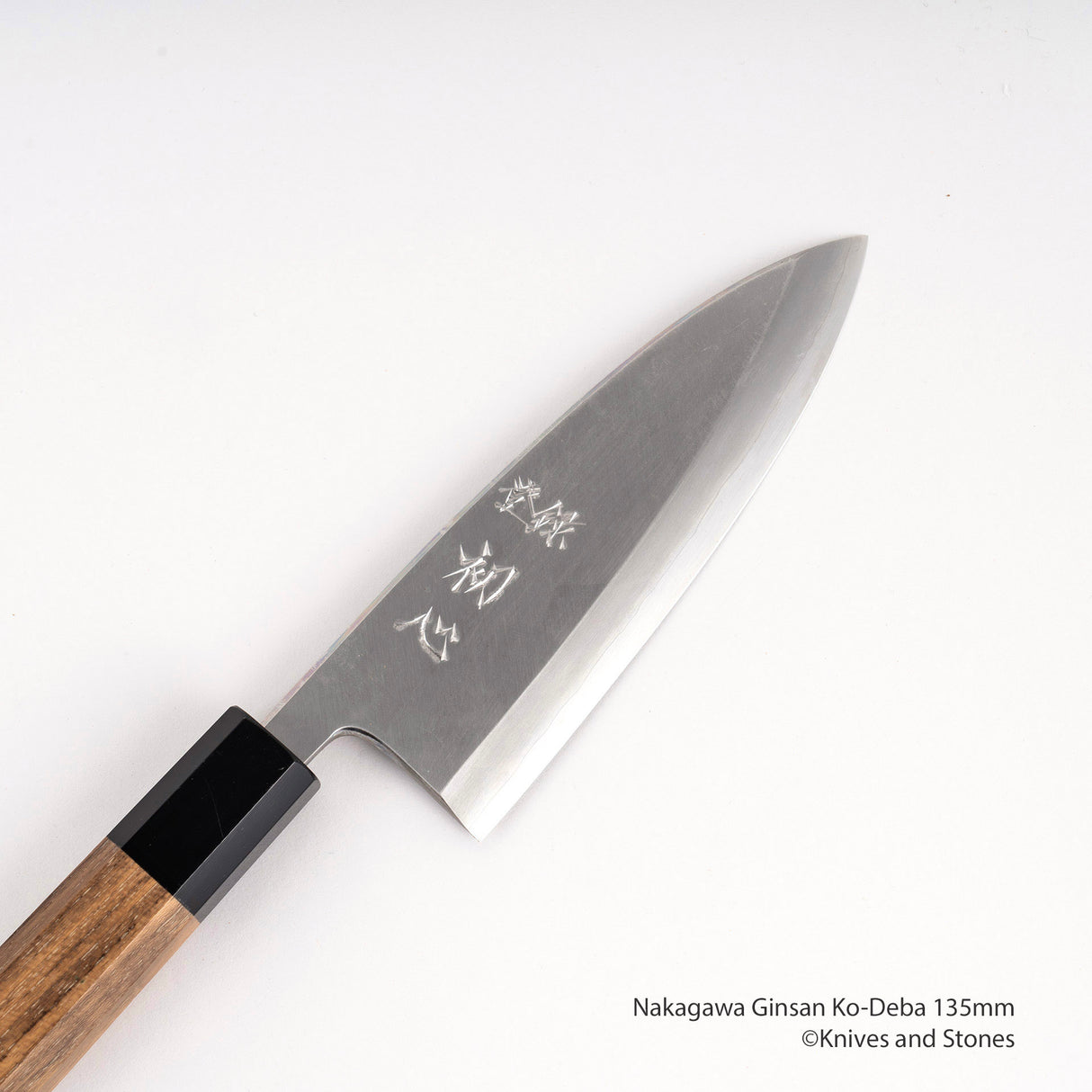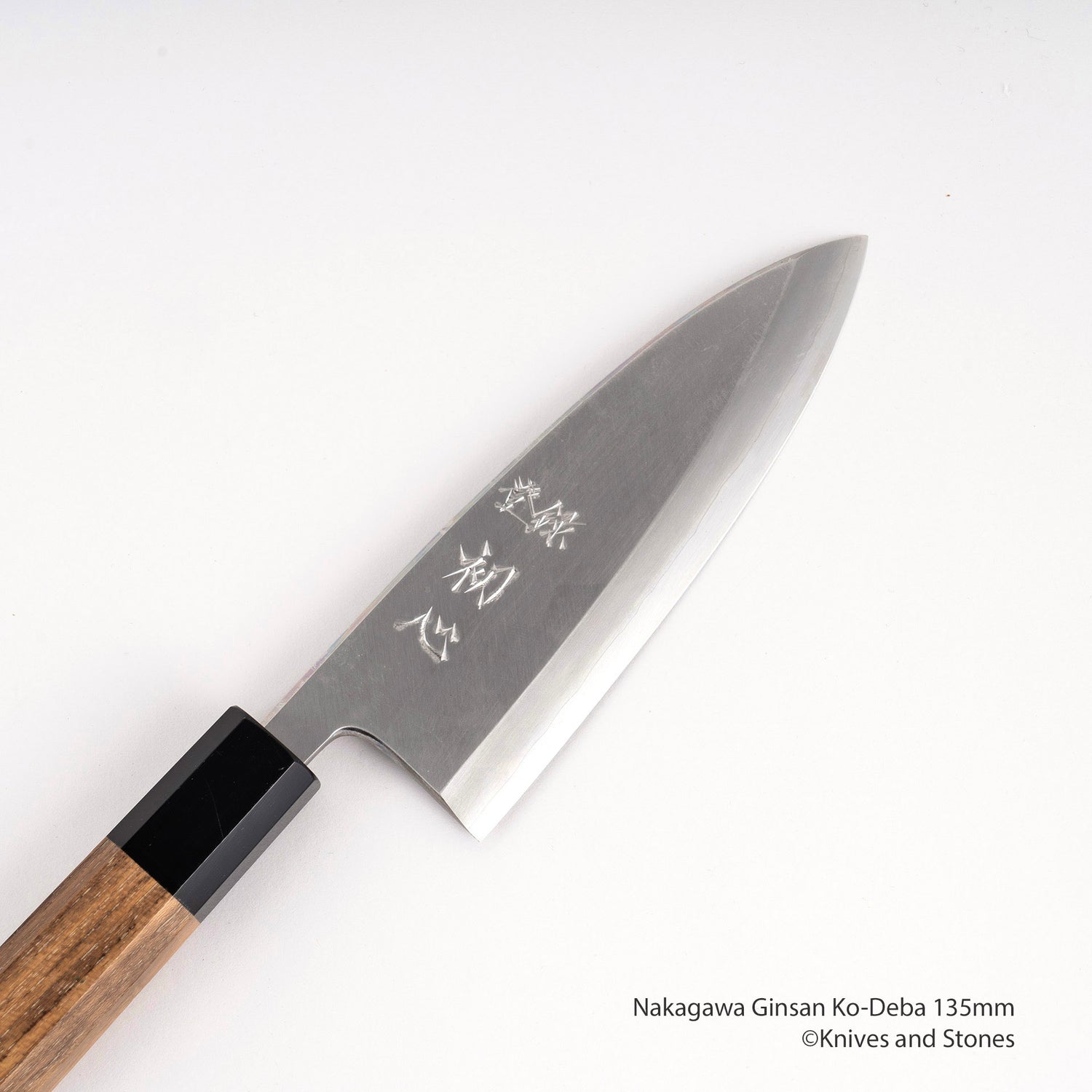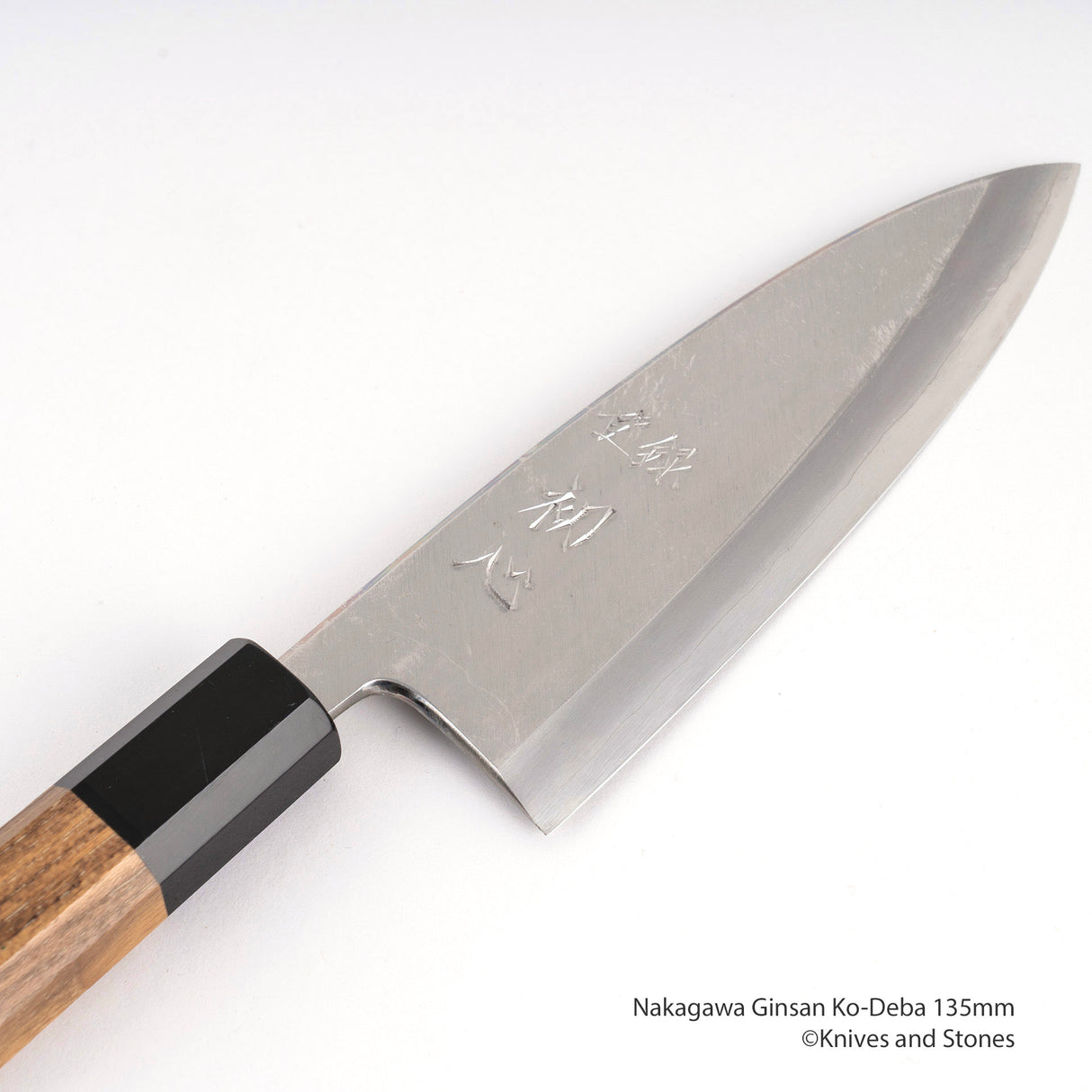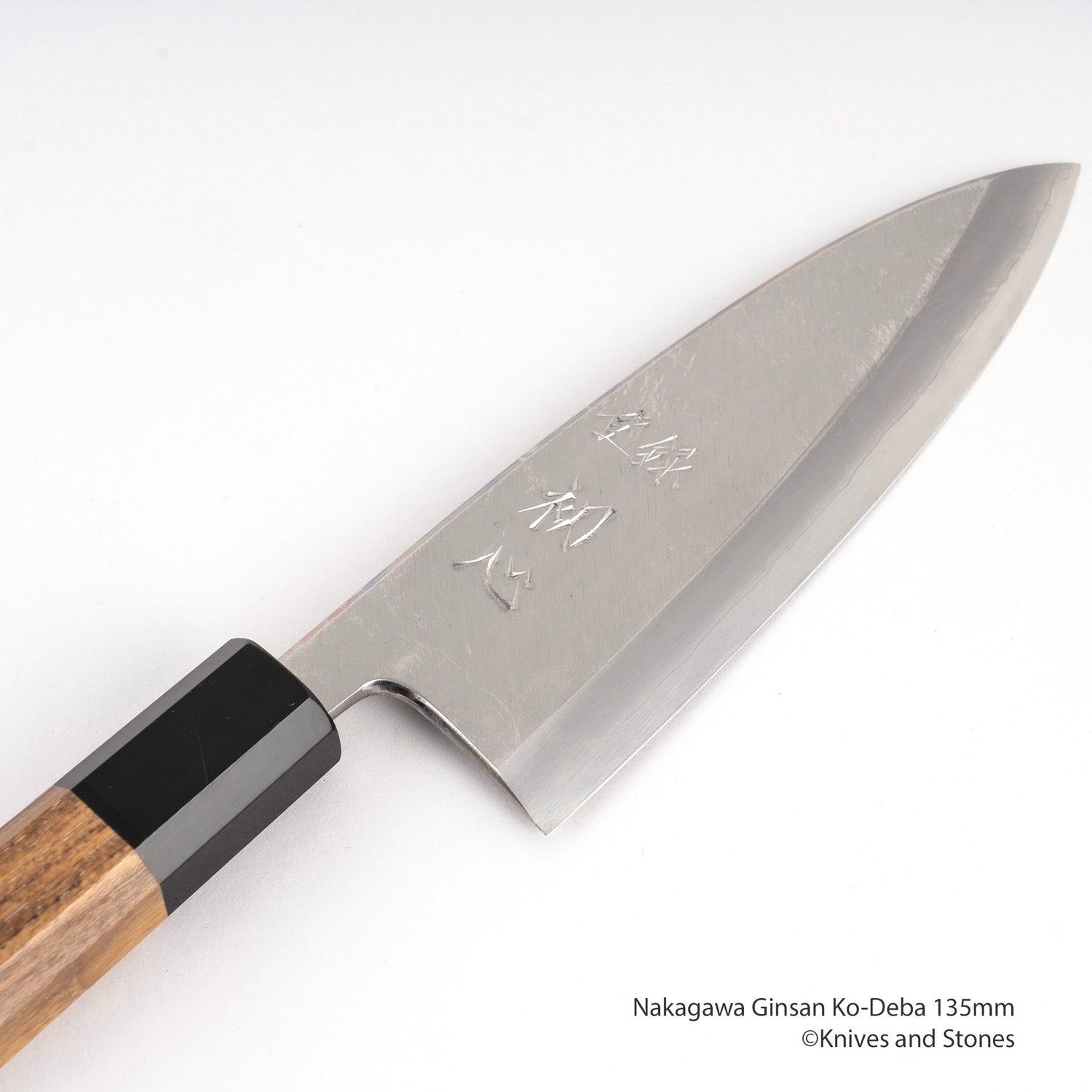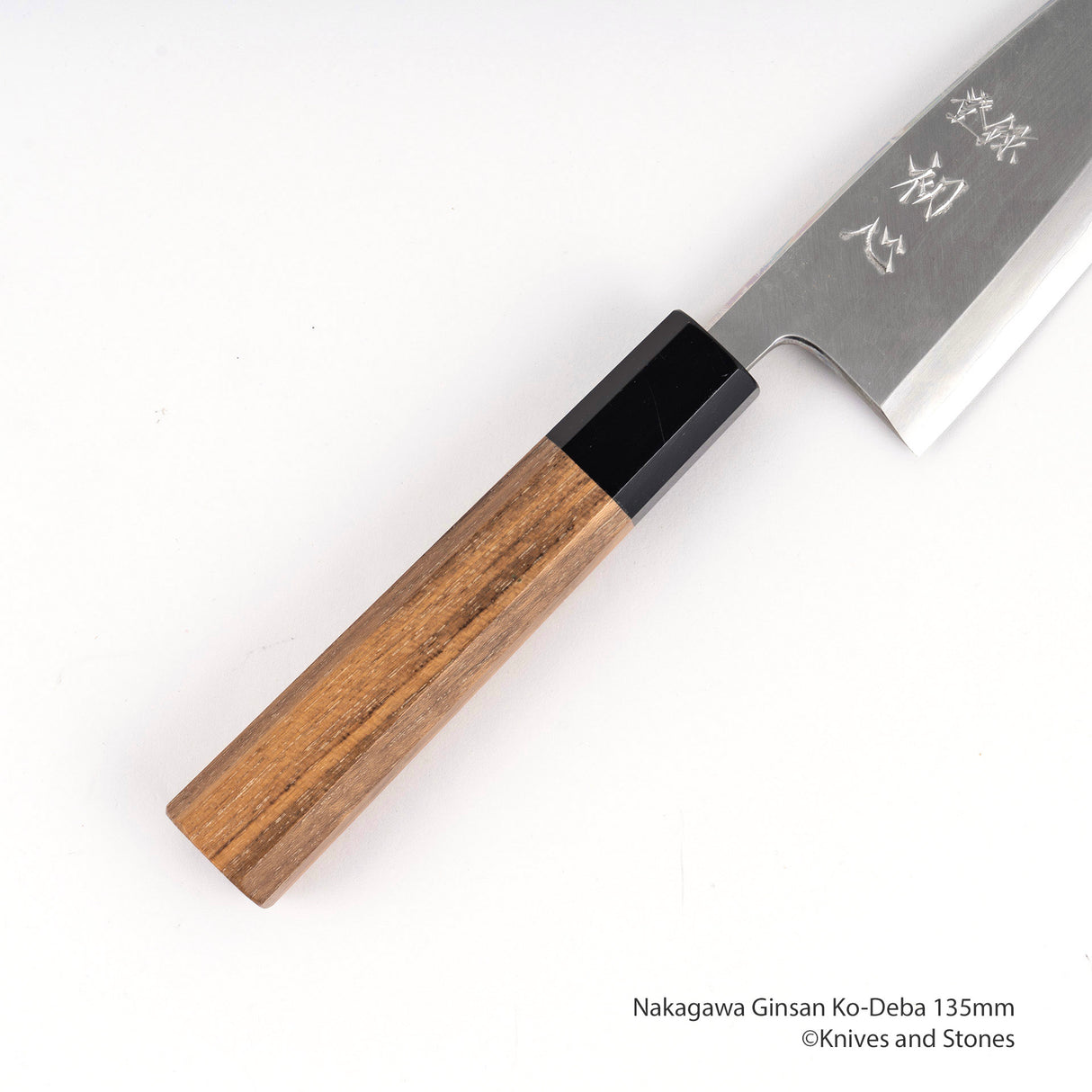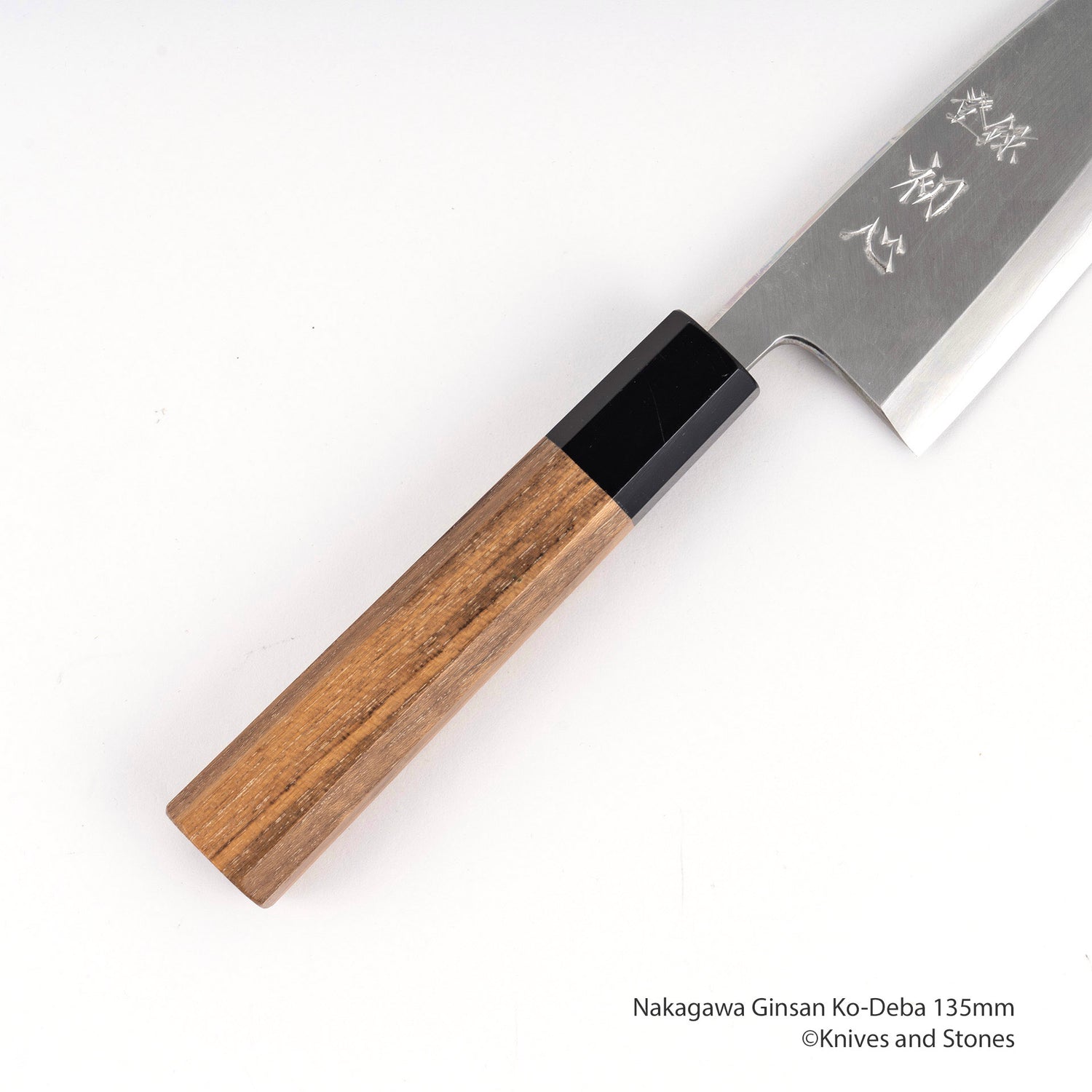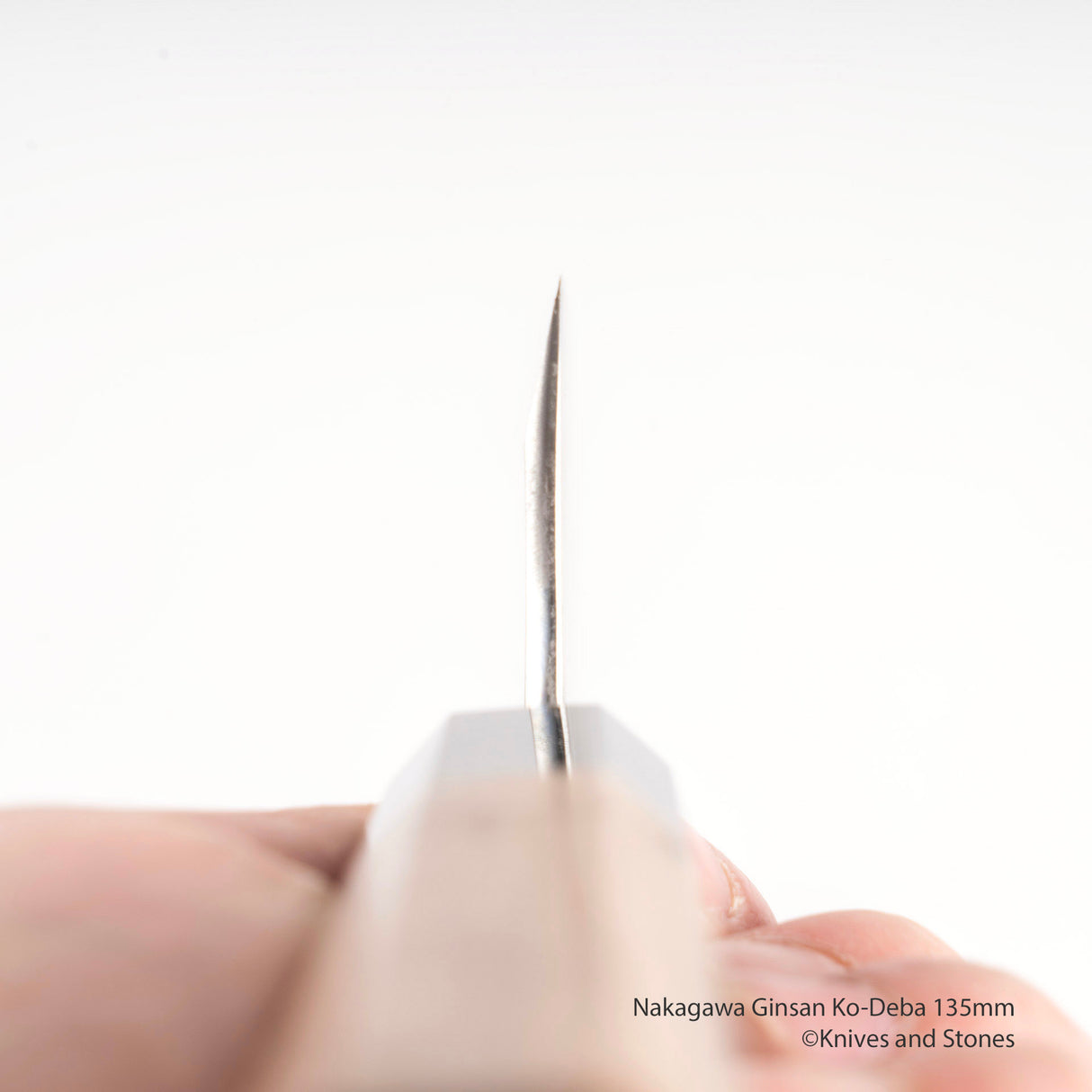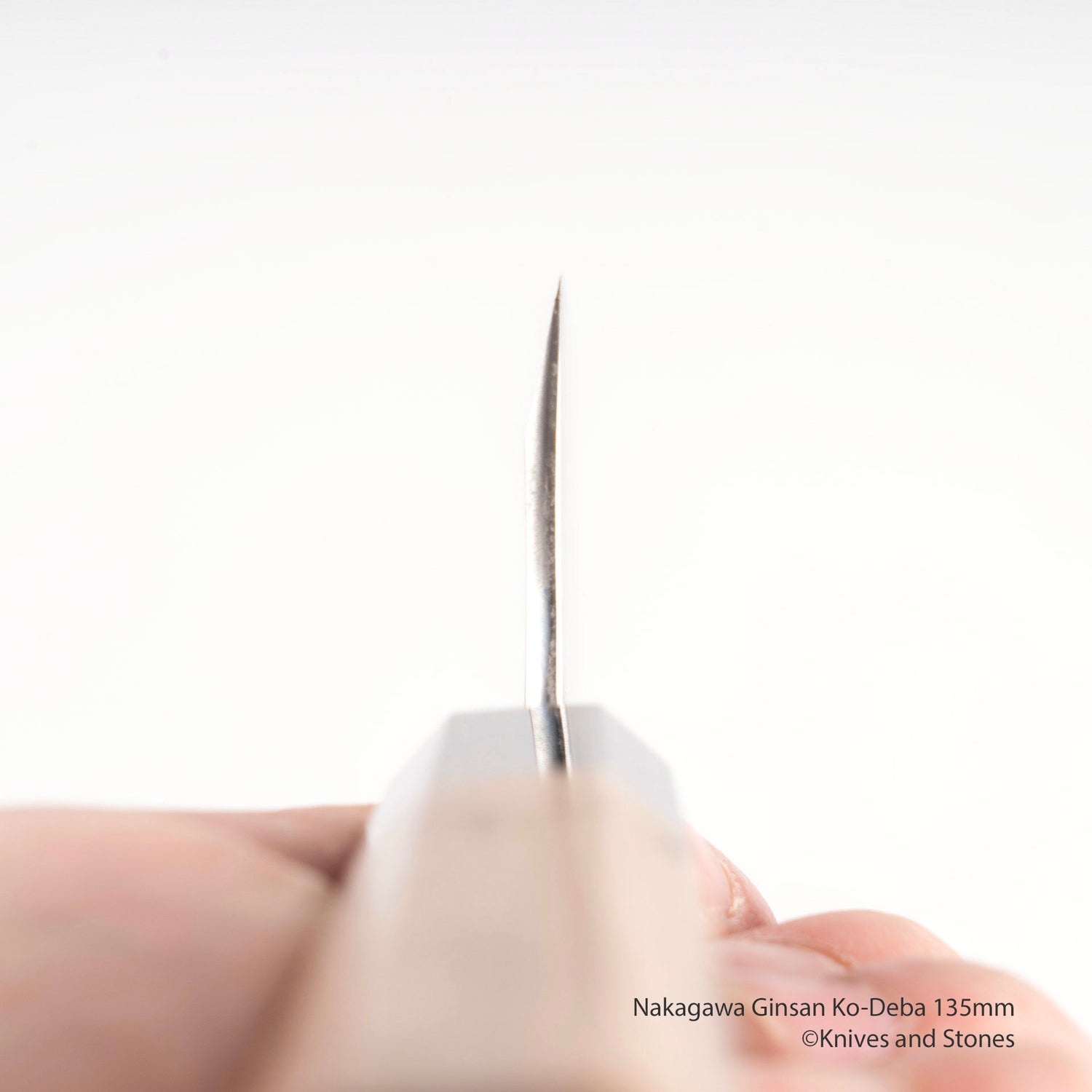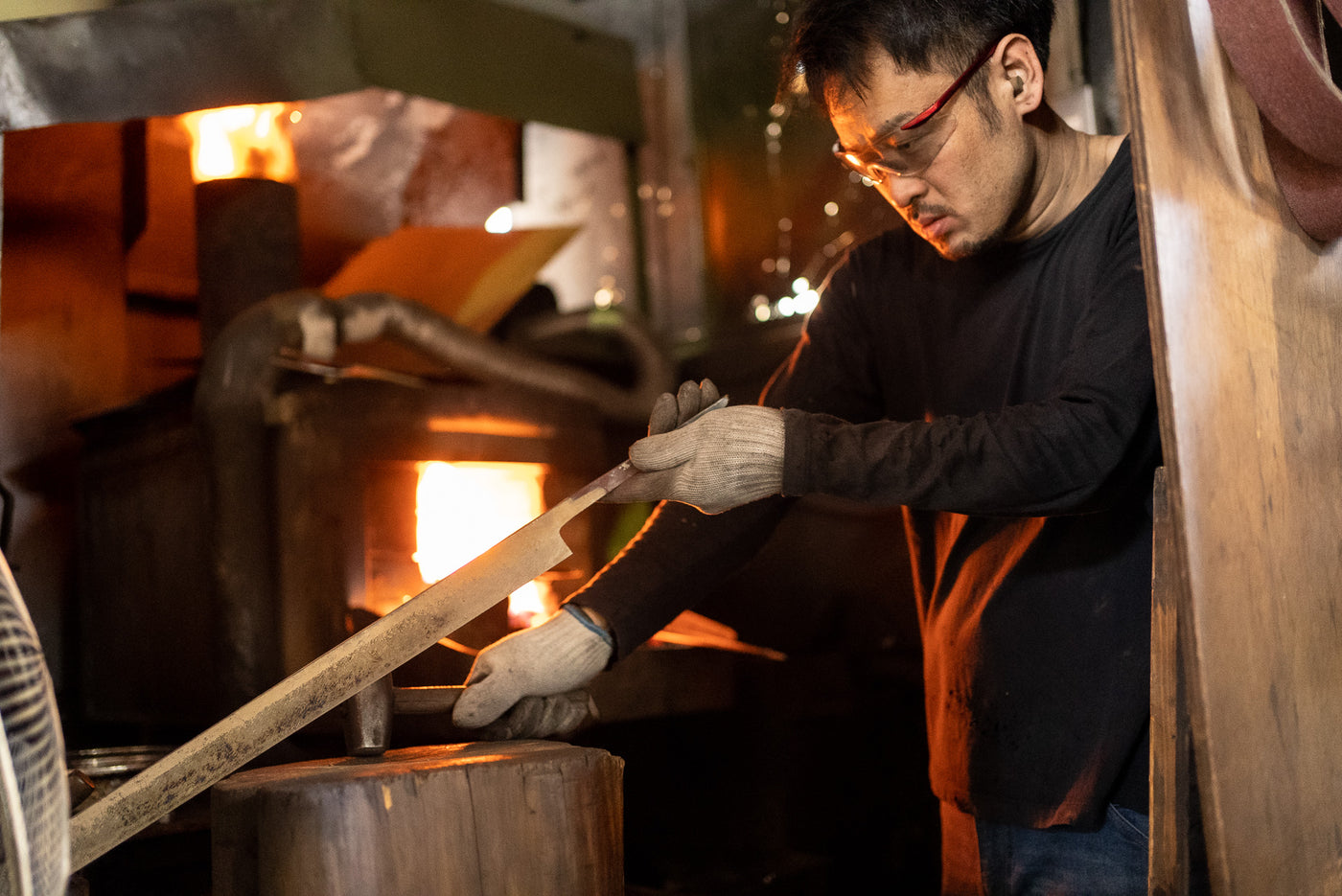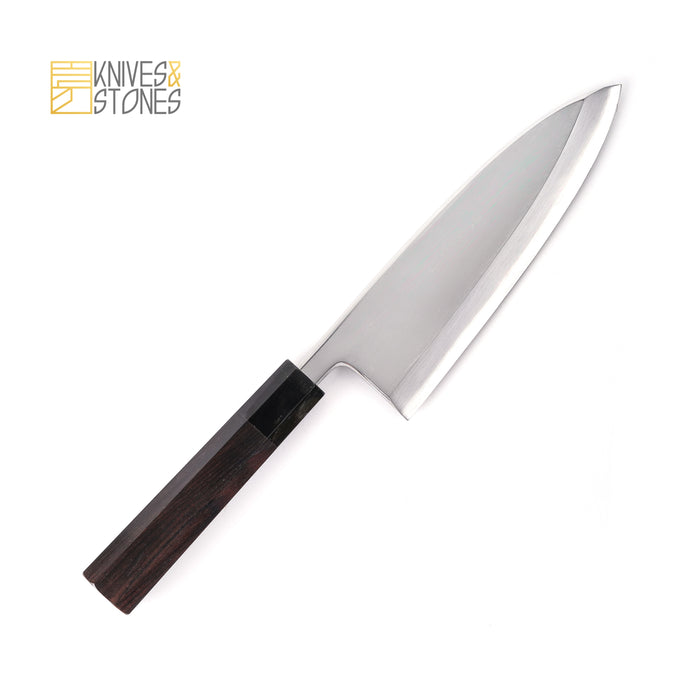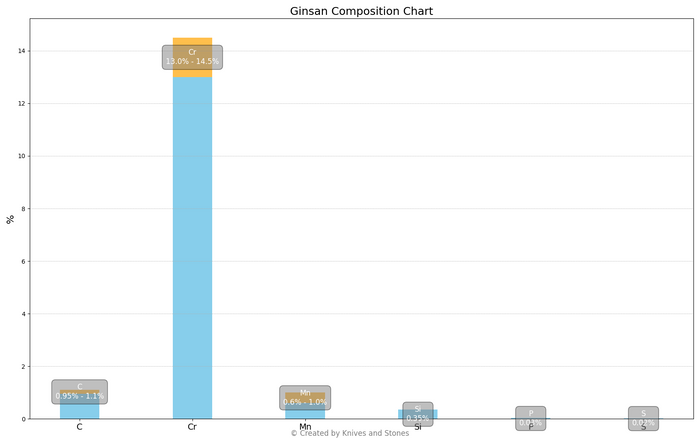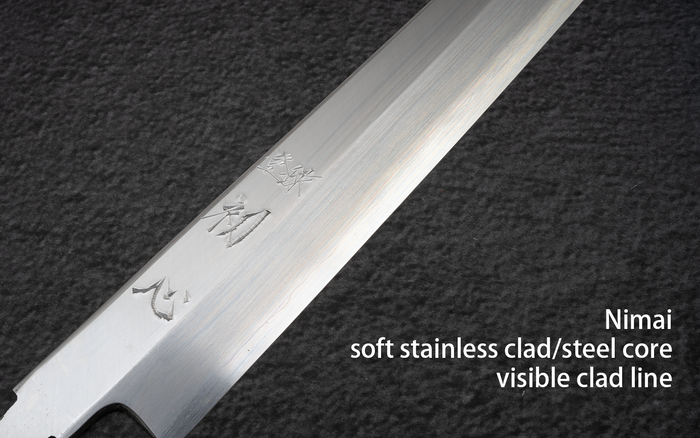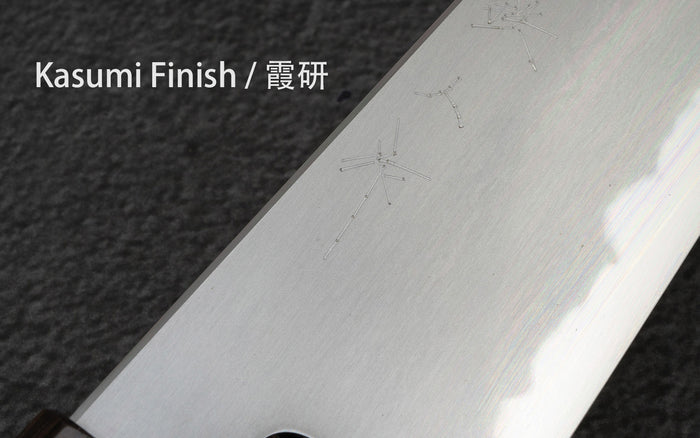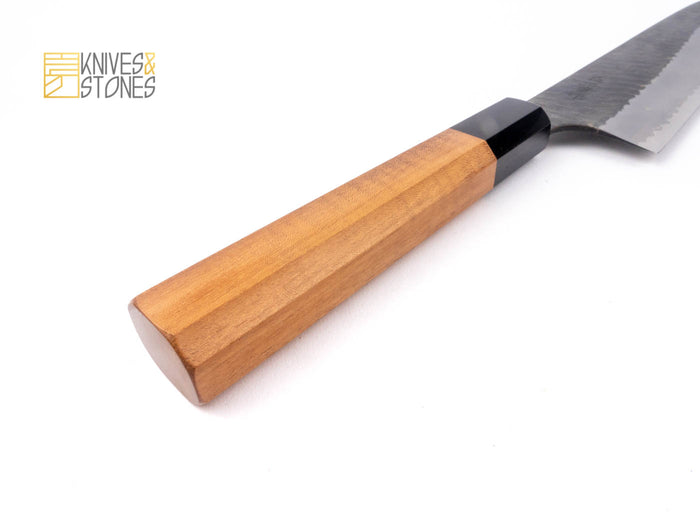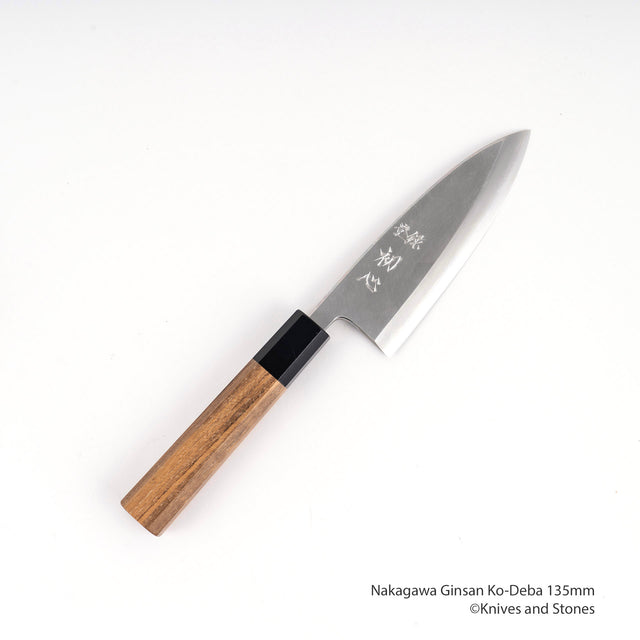Hatsukokoro | SKU:
NK-GINSAN-KOD135
Nakagawa Ginsan Ko-Deba 135mm
Regular price
$379.95
Unit price
/
Unavailable
Nakagawa Ginsan Ko-Deba 135mm is backordered and will ship as soon as it is back in stock.
Couldn't load pickup availability
Detailed Specifications
| Line | Hatsukokoro by Nakagawa Ginsan Single bevel Kasumi |
| Profile | Deba |
| Bevel Type | Single Bevel |
| Weight | 153 g | 5.4 oz |
| Edge Length | 138 mm | 5 7/16″ |
| Heel Height | 46 mm | 1 13/16″ |
| Width @ Spine | 3.6 mm | 9/64″ |
| Width @ Mid | 3.1 mm | 1/8″ |
| Width @ 1cm from Tip | 1.8 mm | 5/64″ |
| Steel | Ginsan / Silver #3 | Stainless |
| Blade Construction | Nimai - Stainless Clad |
| Hardness (HRC) | 60 - 62 |
| Surface Finish | Kasumi |
| Handle | Octagonal Teak Black Ferrule |
| Region | Sakai |
| Best for |
|

| Pros | Cons |
|
|
|
Care Instruction
- Don't cut hard things! Japanese knives are brittle so bone hacking is a NO NO!
- Wash with neutral detergent after use, and wipe dry;
- Please don't wash knife with dishwasher, it will damage the wood handle;
- Be careful not to leave the knife close to a heat source for a long time;
- It is a lot more dangerous to cut with a blunt knife than a sharp knife!
- It is best to sharpen a Japanese knife regularly on a waterstone.

